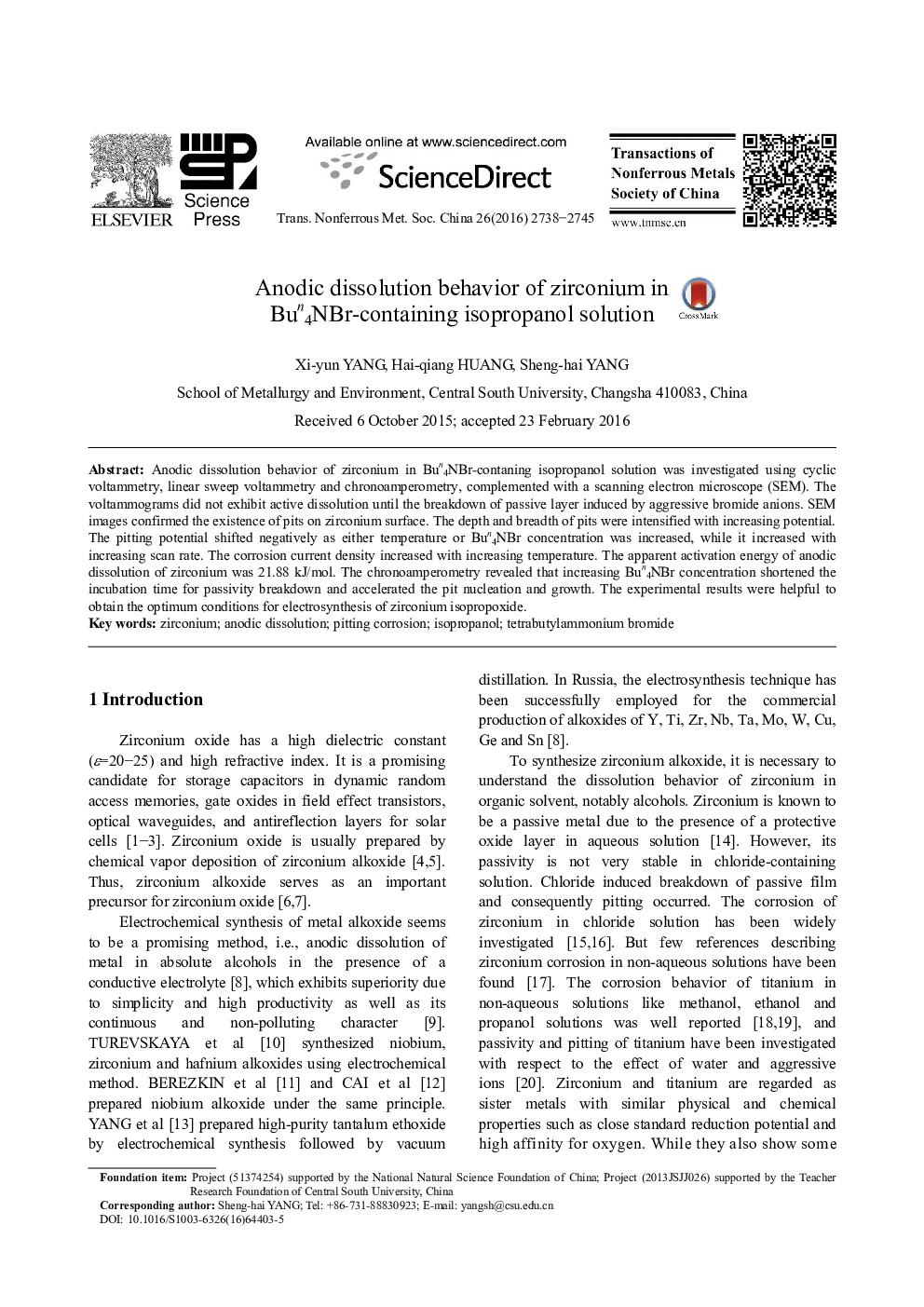| Article ID | Journal | Published Year | Pages | File Type |
|---|---|---|---|---|
| 8012216 | Transactions of Nonferrous Metals Society of China | 2016 | 8 Pages |
Abstract
Anodic dissolution behavior of zirconium in Bun4NBr-contaning isopropanol solution was investigated using cyclic voltammetry, linear sweep voltammetry and chronoamperometry, complemented with a scanning electron microscope (SEM). The voltammograms did not exhibit active dissolution until the breakdown of passive layer induced by aggressive bromide anions. SEM images confirmed the existence of pits on zirconium surface. The depth and breadth of pits were intensified with increasing potential. The pitting potential shifted negatively as either temperature or Bun4NBr concentration was increased, while it increased with increasing scan rate. The corrosion current density increased with increasing temperature. The apparent activation energy of anodic dissolution of zirconium was 21.88 kJ/mol. The chronoamperometry revealed that increasing Bun4NBr concentration shortened the incubation time for passivity breakdown and accelerated the pit nucleation and growth. The experimental results were helpful to obtain the optimum conditions for electrosynthesis of zirconium isopropoxide.
Related Topics
Physical Sciences and Engineering
Materials Science
Metals and Alloys
Authors
Xi-yun YANG, Hai-qiang HUANG, Sheng-hai YANG,
